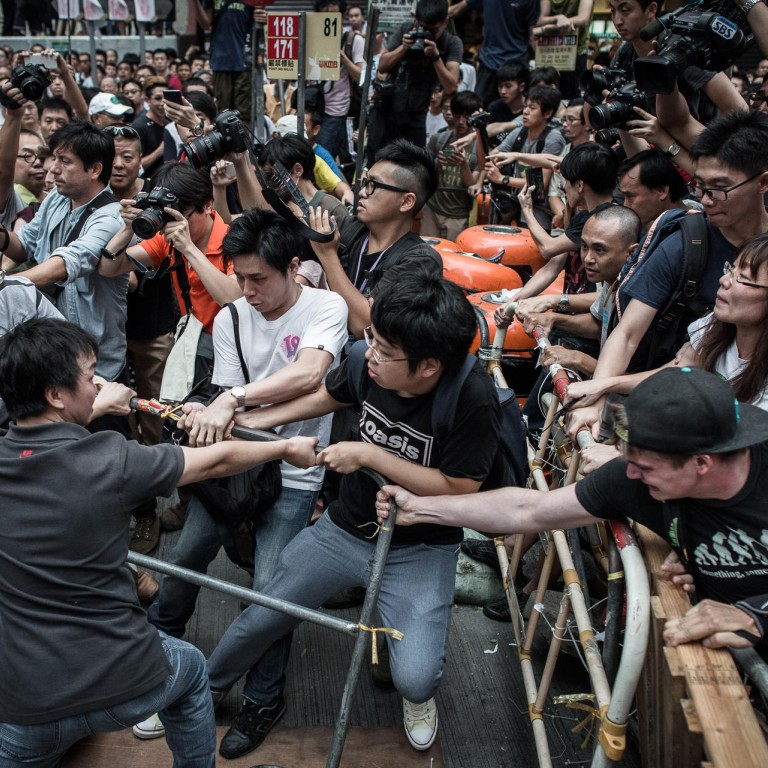
The end is nigh: in Hong Kong, disaster has never been far away
From the Taiping rebellion to typhoons and typhoid, Hong Kong has always given writers a calamitous backdrop to milk, writes Jason Wordie.
One dramatic theme constantly recurs within the study of Hong Kong’s past: from the colony’s earliest years down to the present day, some unprecedented disaster has always lurked around the corner. And it was almost always reported as the beginning of the end.
For most of Hong Kong’s urban existence, China has lurched from chaos to disaster, providing the perfect setting for broader tension. Geographically, culturally and ethnically part of – yet politically and administratively different from – an enormous, complicated country, Hong Kong’s chroniclers have never been short of exciting regional and local catastrophes to get agitated about.
The West River rebellion of the late 1840s – a Hakka-Cantonese intra-ethnic land conflict that saw refugees from Guangdong pour into Macau and Hong Kong – and the devastating Taiping rebellion the following decade, were the first Chinese disasters affecting the early colony to make their way into print. The Pacific war and Japanese occupation, and various Chinese revolutions and their aftermaths were subsequent themes.
For a once great place to have become so rudderless and directionless, so prone to whimpering and bickering, and so locked in utterly needless decline is the ultimate Hong Kong catastrophe story.
During the 1950s and '60s, with a massive refugee influx from China – affecting urban conditions and causing chronic water shortages – and the Cultural Revolution’s political lunacy looming, the sense of urgency about securing Hong Kong’s present and future was rational.
Politics wasn’t the only problem. Typhoons caused significant loss of life and property. Bubonic plague was initially a regular visitor and, in the late 19th and early 20th centuries, syphilis – the HIV/Aids of its day – was widespread. Cholera and typhoid were summer staples until recent years. The only major variable was whether the port would be closed to international shipping in consequence.

Gazing into crystal balls is an occupational hazard in Hong Kong, which, despite being routinely portrayed to the outside world as transparent, is actually quite opaque. Journalists hungry for a “story” have been quick to capitalise on apparently apocalyptic situations, however speculative they may have been. Popular novels also milk this drama-prone backdrop, and Hong Kong itself helps out by regularly providing natural and man-made disasters. Nightmare scenarios need only a touch of a writer’s imagination to become all too plausible.
Various works of reportage offer insight into this particular theme. Borrowed Place, Borrowed Time, by Australian journalist Richard Hughes, remains a minor local classic, written in 1968 when the Cultural Revolution was at its height, and Hong Kong was a distinctly different “pimple on the arse of China”, as Mao Zedong so pithily put it. Mouldering Pearl: Hong Kong At The Crossroads, by Hong Kong-raised White Russian academic Felix Patrikeeff, which explores tensions in the immediate aftermath of the Sino-British negotiations that led to the signing of the Joint Declaration in 1984, is another highly readable example.
In the wake of the 1989 Tiananmen Square crackdown, the world’s journalists descended on Hong Kong like vultures, and they did so again for the prolonged cliffhanger of the 1997 handover. During last year’s Occupy protests, especially after the initial tear-gas episode, more than a few international reporters privately hoped the PLA’s tanks would turn out and deal decisively with the civil unrest.
These days, however, broad-based societal decline is more palpable than any sense of imminent disaster. For a once great place to have become so rudderless and directionless, prone to whimpering and bickering, and locked in utterly needless decline is the ultimate Hong Kong catastrophe story. And the sequel is still to be written.
For more on Hong Kong history and heritage, go to scmp.com/topics/old-hong-kong

